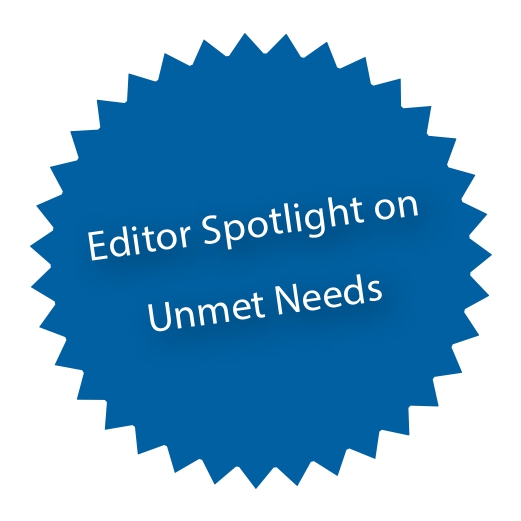In the wake of the change to a phenotype-based approach to rosacea, the Rosacea Consensus (ROSCO) group saw the need to develop a comprehensive longitudinal monitoring tool [1]. Taking care of patients suffering from this chronic disease involves long-term management with modifications in therapy whenever clinical features change. The new Rosacea Tracker is supposed to offer an option to document changes in rosacea disease features for physicians, as well as an option to record patient-reported clinical changes and influence on patients’ quality of life. Collecting this evidence could enable the physician to decide if and when altering the management is indicated.
The global 2019 ROSCO group comprises 19 dermatologists and 2 ophthalmologists. They used a modified Delphi method to answer various questions as a base for the Rosacea Tracker prototype. The participants received these questions via a blinded e-survey. Per definition, a consensus was reached if ≥75% of the participants responded to a question with ‘agree’ or ‘strongly agree’. As a result, the Rosacea Tracker consists of distinct sheets to be completed by the physician and by the patient. In addition, instructions on how to report on disease features were documented in separate user guides. The instructions and their presentation were rated ‘clear” by most of the panel members (18/21 and 17/21).
Physicians should assess severity of features in different grades: cutaneous with grade 0 (clear/none) to 4 (severe), ocular with grade 0 (clear/none) to 4 (severe: sclerokeratitis/anterior uveitis). The answers to questions on the impact of rosacea on the patient’s quality of life were also categorised in 4 steps: from 0 (not at all) to 4 (very much). Among the 10 cutaneous signs included in the physician’s sheet were: transient/persistent centrofacial edema, (non-)inflamed phyma, burning sensation, telangiectasia, and papules/pustules. The ocular sheet features 8 findings, including blepharitis, conjunctivitis, or dry/gritty/ foreign body sensation.
The authors anticipate the Rosacea Tracker to become a very helpful tool for clinical practice. As further validation and refinement is endorsed, a number of panel members will now introduce the Rosacea Tracker in their clinics.
- Tan J, et al. P0024, EADV 2019, 9-13 Oct, Madrid, Spain.
Posted on
Previous Article
« Comorbidities more common in chronic urticaria, psoriasis, and AD Next Article
Above-the-neck melanoma more prone to metastases »
« Comorbidities more common in chronic urticaria, psoriasis, and AD Next Article
Above-the-neck melanoma more prone to metastases »
Table of Contents: EADV 2019
Featured articles
Late-Breaking News
IL-17A blocker effective in paediatric psoriasis patients
Rituximab beats mycophenolate mofetil in pemphigus vulgaris
Acne highly influenced by climate, pollutants, and unhealthy diet
JAK inhibition plus TCS lead to high clearance rates in AD
No cancer risk with long-term use of tacrolimus, a topical calcineurin inhibitor, in children with AD
Green light for a second JAK inhibitor in AD
Topical ruxolitinib effective in vitiligo
Emerging Therapies
Small molecules: interesting novel treatment options in AD
IL-1⍺ blockade: a new treatment option in AD
IL-4/IL-13 blockade leads to rapid itch reduction in adolescents
How to manage conjunctivitis in AD patients treated with a biologic
Biologics: increasingly used in paediatric dermatology
Spotlight on Psoriasis
IL-17 blocker: effective and safe in patients with comorbidities
ESPRIT registry: sharp decline in mortality in patients treated with a TNF blocker
Relationship psoriasis and NAFLD: new data on the hepato-dermal axis
Novel selective IL-23 blocker equally effective in patients with metabolic syndrome
Selective IL-23 blocker crushes fumaric acids in all assessed efficacy endpoints
No hint of teratogenicity through ixekizumab
New Insights in Photoprotection
Systemic photoprotection: a valuable addition to topical sun protection
The underestimated effect of visible light
Urticaria
Comorbidities more common in chronic urticaria, psoriasis, and AD
D-Dimer as future biomarker in CSU management?
Ligelizumab for CSU: symptom control and high response rates in re-treatment
Rosacea – From New Spectrum to New Therapy
New guidance on rosacea therapy according to phenotype
Best of the Posters
Above-the-neck melanoma more prone to metastases
Reduced sleep quality in dermatoses influenced by itch and pain
Anxiety and depression are common in families of AD infants
Certolizumab pegol efficacious for head and neck psoriasis
Related Articles


April 22, 2024
Meet the Trialist: Dr Andrew Blauvelt on the KNOCKOUT Trial
© 2024 Medicom Medical Publishers. All rights reserved. Terms and Conditions | Privacy Policy
HEAD OFFICE
Laarderhoogtweg 25
1101 EB Amsterdam
The Netherlands
T: +31 85 4012 560
E: publishers@medicom-publishers.com

